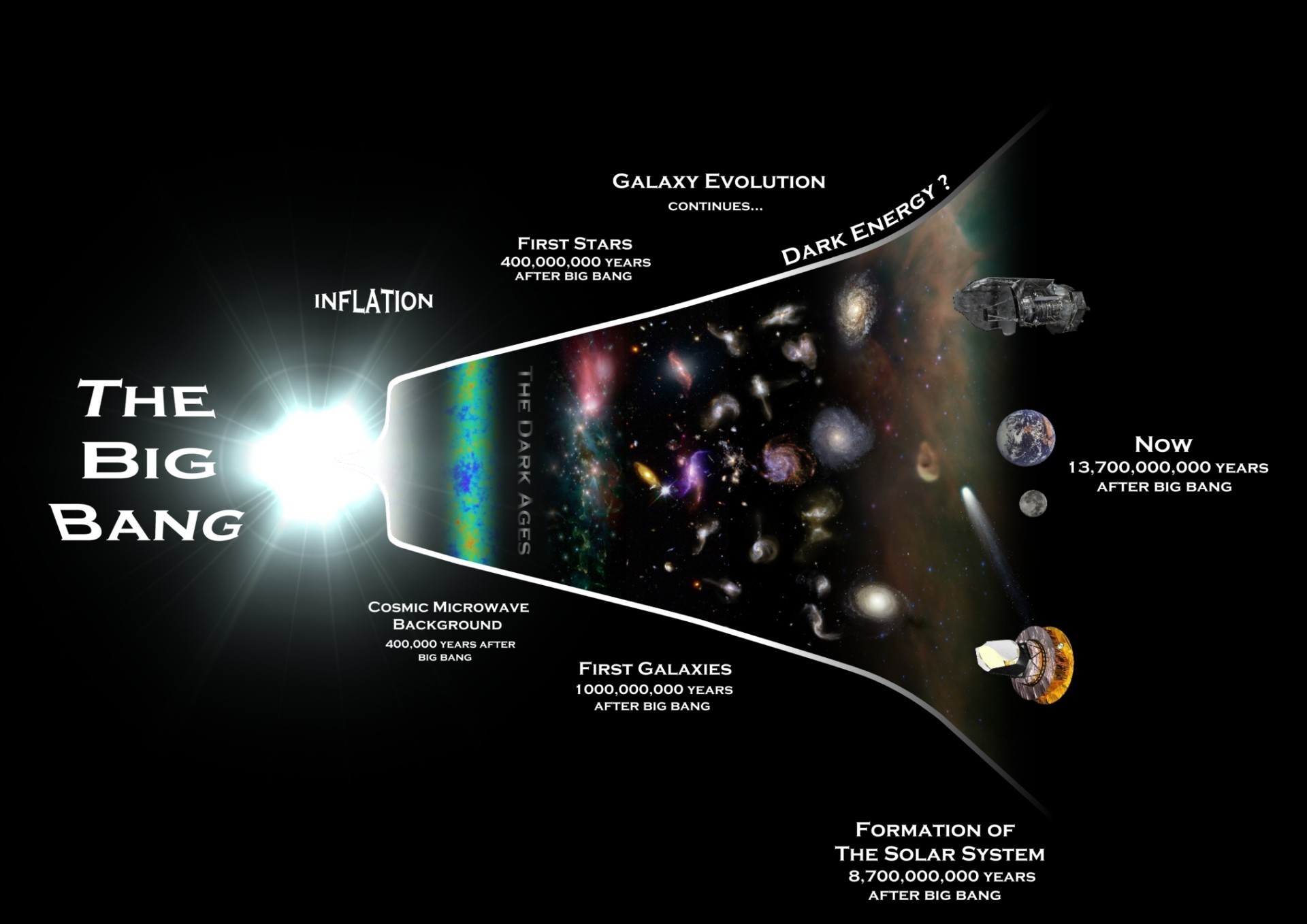The Universe Expands Faster Than Thought
New calculation of the Hubble constant: 73.23 (km / s) / Mpk

When astrophysicist Edwin Hubble, almost a hundred years ago, determined that the Universe is expanding evenly in all directions, this discovery was a real surprise. Then, in the mid-1990s, another unexpected thing emerged: it turns out that the Universe is expanding faster and faster, that is, with acceleration. The reason for this is considered repulsive properties of a substance called "dark energy."
Now with the help of the Hubble Space Telescope, NASA astrophysicists have determined that the Universe is expanding faster than expected . How to interpret this discovery is still unclear, but Hubble’s constant will have to be reconsidered.
“This unexpected discovery may be an important key to understanding what constitutes 95% of the mass of the Universe, which does not emit light, including dark energy, dark matter and dark radiation ( dark radiation ),” explained the lead author of the study and Nobel Laureate Adam Riess from the Space Research Institute using the Space Telescope and Johns Hopkins University.
')
The so-called “dark radiation,” about which the Nobel laureate speaks, is probably one of the hypothetical forms of dark energy.
Scientists offer several explanations for what is happening. Perhaps dark energy pushes the galaxies apart more than expected. Or the early space may contain a new type of elementary particles, called “dark radiation” (dark radiation), that is, in the formula for the expansion of the Universe after the Big Bang, you should add more energy from dark radiation.
The third option is that dark matter, an invisible form of matter that makes up most of the mass of our Universe, has some strange, unexpected characteristics. In the end, Einstein's theory of gravity may be incomplete.
Adam Riess and his colleagues developed a new technique for estimating the rate of expansion of the universe in 2005. Innovative technology allows you to better determine the distance to distant galaxies.

The method consists of three steps, which are shown in the diagram. It provides for the search for galaxies with supernovae of type Ia and stars Cepheids. The cypheids pulsate in an exact dependence on their instinctive luminosity, which can be compared with their apparent luminosity for an accurate estimate of the distance. Type Ia supernovae, in turn, are formed as a result of white dwarf explosions and are bright enough to observe from a relatively long distance.
For ten years, scientists measured about 2,400 Cepheids in 19 galaxies, estimated their apparent brightness, accurately measured the true brightness and calculated a distance of up to about 300 Type Ia supernovae in distant galaxies.
Until now, the most reliable estimate of the Hubble constant was 67.80 ± 0.77 (km / s) / Mpc, that is, in the modern era, two galaxies separated by a distance of 1 megaparsek, fly at an average speed of ~ 68 km / s.
According to the new measurements, the Hubble constant is 73.2 (km / s) / Mpc, that is, two galaxies separated by a distance of 1 megaparsek, on average, fly at a speed of ~ 73 km / s.
The proposed method is more accurate than previous methods: the expansion rate is determined with an accuracy of 2.4%. But even with this error, the new Hubble constant is much larger than the old one.
The results of a ten-year study will be published in the next issue of The Astrophysical Journal .
Calculating the true value of the Hubble constant is not an easy task. For example, the analysis of the afterglow from the Big Bang, conducted by the Wilkinson Microwave Anisotropy Probe (WMAP) and the observations of the European Space Agency's Planck satellite mission gave opposite results: according to the predicted trajectory, the expansion rate of the Universe should now be 5% and 9% less than that obtained Hubble constant value.
Further research will help clarify and measure the rate at which galaxies are removed more precisely at different times.
“We know so little about the dark parts of the universe that it’s very important to measure how strongly they pulled and repelled throughout cosmic history,” said Lucas Macri, one of the authors of the scientific work.
Prior to the launch of the Hubble telescope, the estimates of the expansion rate of the Universe differed by two orders of magnitude. Measurements in the late 1990s helped reduce the error to 10%. Now scientists from the group Supernova H0 for the Equation of State (SH0ES) are working on new methods of calculation, which will reduce the error to 1%.
Source: https://habr.com/ru/post/394691/
All Articles